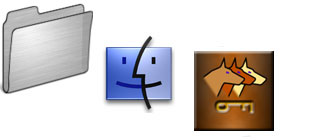 ![[Header]](../XuShared2/Line3.jpeg)

(Up to OJB's Mac Tips List Page)
Introduction to CellularCellular is a communications technology, mainly used for cell phones. This has long range, moderate speed, and is moderately power efficient. It is the system your cell phone uses to communicate. The phone communicates with the nearest (usually) cell tower and multiple towers all work together to connect one phone to another, or your phone to the internet, usually through a cable or maybe a microwave radio link which handles the signal after it reaches the tower.
There are many cell towers and they can work up to a distance of 70 kilometers, although in areas where there might be a lot of phones the load is shared between towers which might be 2 or 3 kilometers apart, or even less than a kilometer in the middle of cities. The area each tower covers is called a cell, which is the reason the network is called "cellular". In many cases, your phone can see many towers (or cell sites) and it decides which to use based on signal strength and how busy that site is.
Ideally cellular covers the whole country, although it is common for there to be spots in remote areas where there is no coverage. To get truly universal coverage, satellite systems can be used, most recently StarLink, but that is not a common technology yet, and I'm not covering it here.
Note that smartphones can also connect through wifi, and if you have that option available you should generally use it, because it should be faster, cheaper, and more reliable. When you walk out of range of the wifi modem the phone should automatically switch back to the cellular network.
Smartphones usually offer a feature called "personal hotspot" or "tethering" where the cell phone can communicate with the cellular system and make that access available to other devices, like a computer which doesn't have cellular itself, through wifi. It effectively becomes a wifi modem you can use anywhere. This is great, except it can be expensive, depending on your plan, and some cell phone service providers also charge extra to even enable it.
While we are on the subject of data charges, let's briefly talk about that. When you connect your earbud to your phone through Bluetooth it only involves stuff you own so it is free. But when you connect to the internet through wifi the signal is sent onto a network owned by a service provider, and they will charge you for that. The same applies when you connect over cellular (for either internet data, text, or voice). Note that fibre or copper cable internet is usually charged separately from cellular, even if you use the same company for both, although there is usually a discount in this case.
![[Up]](../XuShared/Up2B.jpeg)
|

![[Up]](../XuShared/Up2B.jpeg)